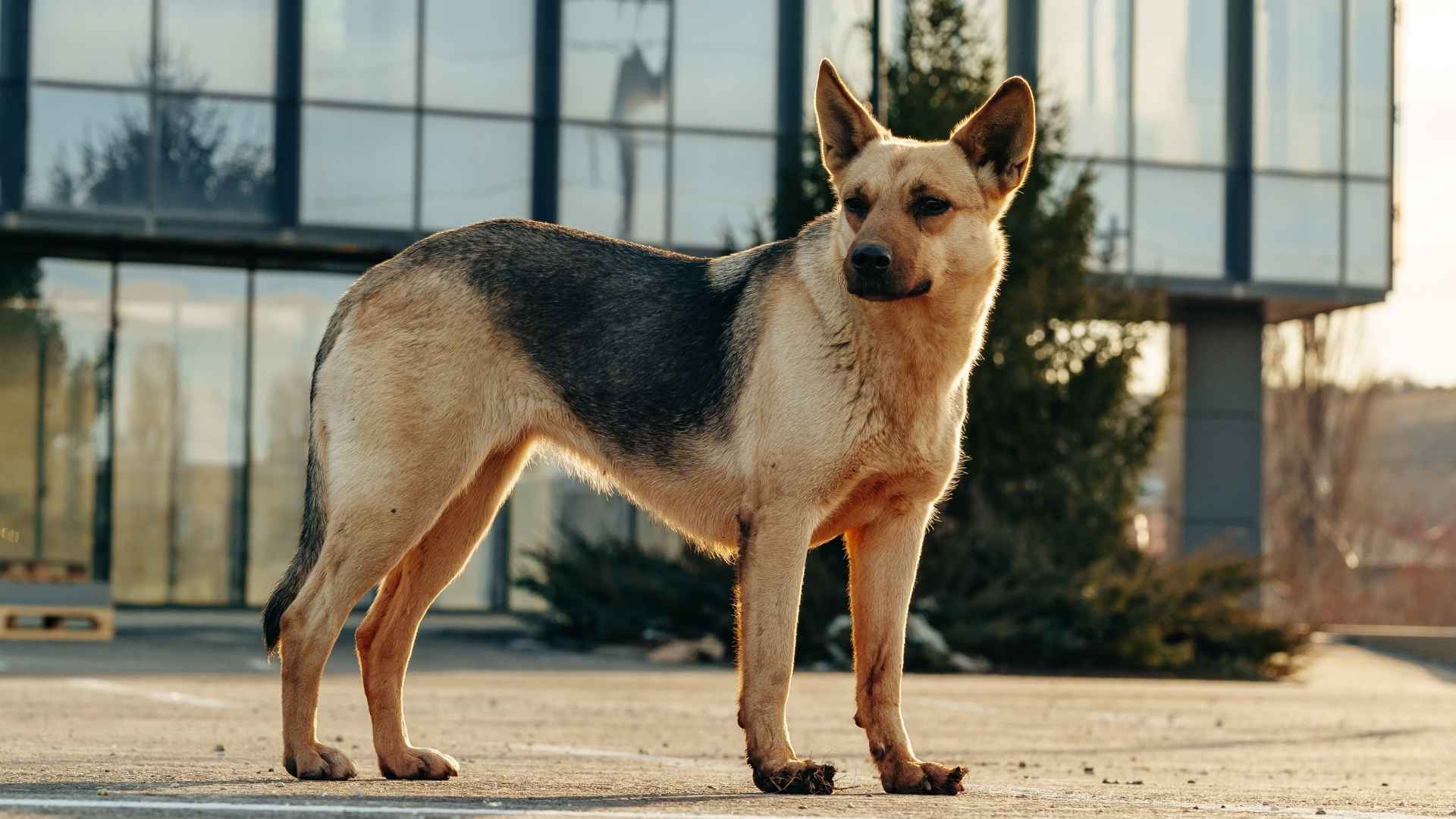City living comes with its own unique set of challenges, tight spaces, crowded sidewalks, and noise at every corner. For dog lovers who want both companionship and a bit of built-in home security, finding the right breed isn’t just about cuteness; it’s about compatibility with an urban lifestyle.
Not all guard dogs are suited to apartment life or bustling neighborhoods, but some breeds stand out for their adaptability, intelligence, and protective instincts without being overly reactive or hard to manage in close quarters.
In this article, we spotlight seven dynamic guard dog breeds that combine vigilance and loyalty with trainability, temperament, and space-awareness. Whether you live in a high-rise or a townhouse, these dogs offer a powerful balance of protection and companionship, without sacrificing your peace of mind or your downstairs neighbors’ sanity.
Ready to meet your ideal four-legged city sentinel? Let’s dive into the list.
Dynamic Guard Dog Breeds For Urban Living
1. German Shepherd
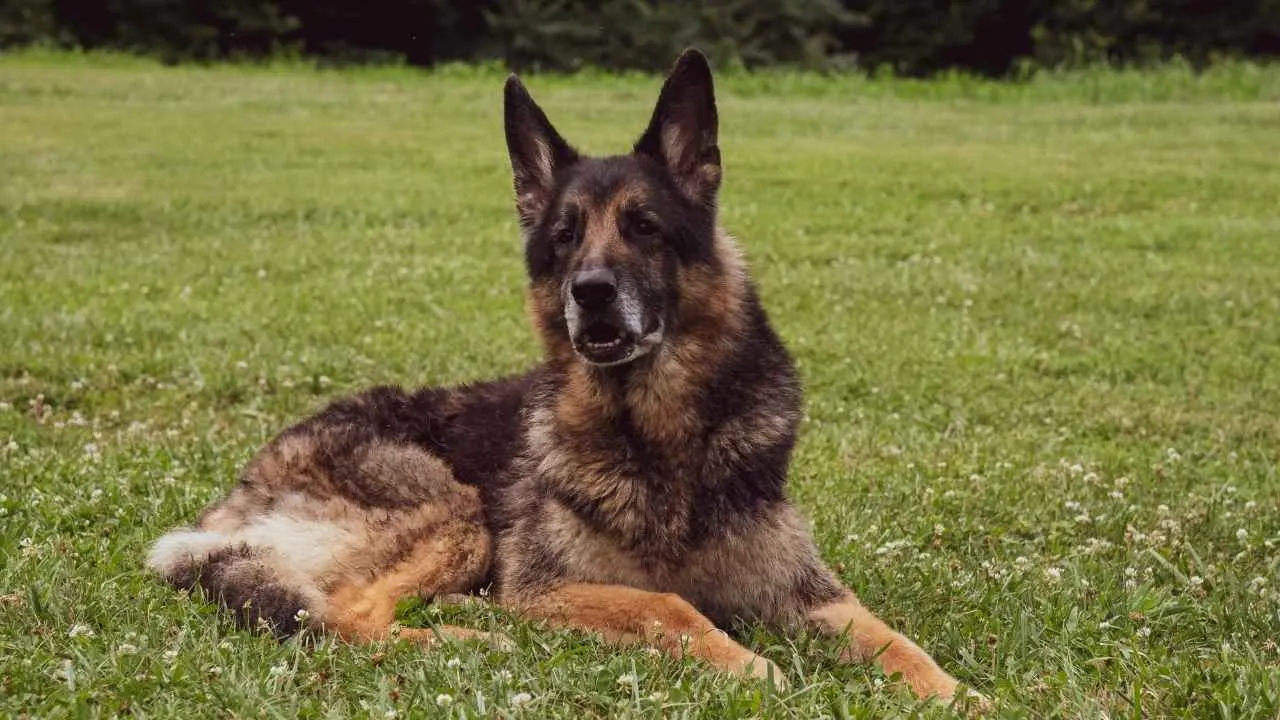
Size: Large
Weight: 50–90 pounds
Temperament: Confident, intelligent, loyal
German Shepherds are one of the most capable and well-rounded dog breeds, excelling in everything from security to companionship. Bred originally for herding, they’re now globally respected for their roles in police, military, and service work. Their natural alertness, discipline, and strong work ethic make them exceptional for households seeking both protection and obedience.
Their adaptability to urban environments is often overlooked. With the right training and regular exercise, these high-energy dogs can comfortably thrive in apartments or townhouses. Structured daily walks and mentally engaging activities like puzzle games or scent work help balance their active minds and bodies.
According to the AKC, German Shepherds are known for their fierce loyalty and strong bond with their human families. They often develop a protective instinct, especially around children, yet they remain composed and discerning in new situations. Their behavior reflects their confidence—they rarely act without purpose.

These dogs have a dense double coat that sheds throughout the year, with seasonal increases in spring and fall. Weekly brushing is essential for managing loose fur and keeping their coat healthy. They also benefit from a high-protein diet to maintain muscle tone and energy.
Although robust, German Shepherds are prone to conditions like hip and elbow dysplasia. Early health screening and joint-supportive diets can mitigate these risks. With attentive care and regular vet checkups, they often live active, fulfilling lives well into their senior years.
Quick Tips
Stimulate their intelligence with obedience drills and scent-based games.
Groom weekly and monitor joint health as they age.
2. Doberman Pinscher

Breed Profile
Size: Medium to large
Weight: 60–100 pounds
Temperament: Alert, fearless, obedient
Doberman Pinschers combine elegance and strength in a striking, streamlined frame. Originally developed as protection dogs, they’re prized for their speed, intelligence, and trainability. Their sleek silhouette and attentive posture give them a commanding presence, yet they are incredibly affectionate with their families.
Well-suited for city life, Dobermans thrive when given routine and structure. They adjust quickly to apartment living when their need for exercise is met through long walks or agility training. Indoors, they’re typically calm and quiet, provided their energy is well-managed.
PetMD states that their short, smooth coat requires minimal upkeep. A quick weekly brushing keeps their fur looking sharp and their skin healthy. They also don’t tend to have a “doggy” odor, which is a nice bonus for close quarters.
Dobermans are known for their loyalty and intelligence. They respond exceptionally well to obedience training and often enjoy advanced activities like tracking or protection sports. Despite their reputation, a properly socialized Doberman is polite, responsive, and steady around strangers.
These dogs are incredibly people-focused and can develop separation anxiety if left alone too long. They do best in homes where they have consistent companionship and a clearly defined role. With experienced, committed owners, Dobermans become protective yet peaceful family members.
Quick Tips
Establish routines early to help reduce anxiety and encourage calm behavior.
Enroll in advanced obedience or agility classes to keep them mentally engaged.
3. Rottweiler

Breed Profile
Size: Large
Weight: 80–135 pounds
Temperament: Calm, confident, courageous
Rottweilers are powerful, balanced dogs with a natural guarding instinct and a strong sense of loyalty. Originally used for herding and protecting livestock, today’s Rottweilers are confident companions with a calm, watchful nature. They’re slow to trust strangers but quick to bond with their inner circle.
In urban settings, Rottweilers do best when their daily needs for movement and stimulation are met. They aren’t hyperactive, but they enjoy purposeful activity—whether it’s obedience work, carrying a weighted backpack, or learning new commands. They’re also surprisingly chill indoors when properly exercised.
Their short, coarse coat is easy to maintain. Weekly brushing and regular baths are usually enough to keep them looking neat. Seasonal shedding occurs but isn’t excessive, especially with proper grooming.
Rottweilers are intelligent and enjoy having clear rules. They thrive under firm but positive training methods and need early socialization to interact well with other dogs and people. Their protective instincts come naturally, so they often don’t require much guard-specific training.
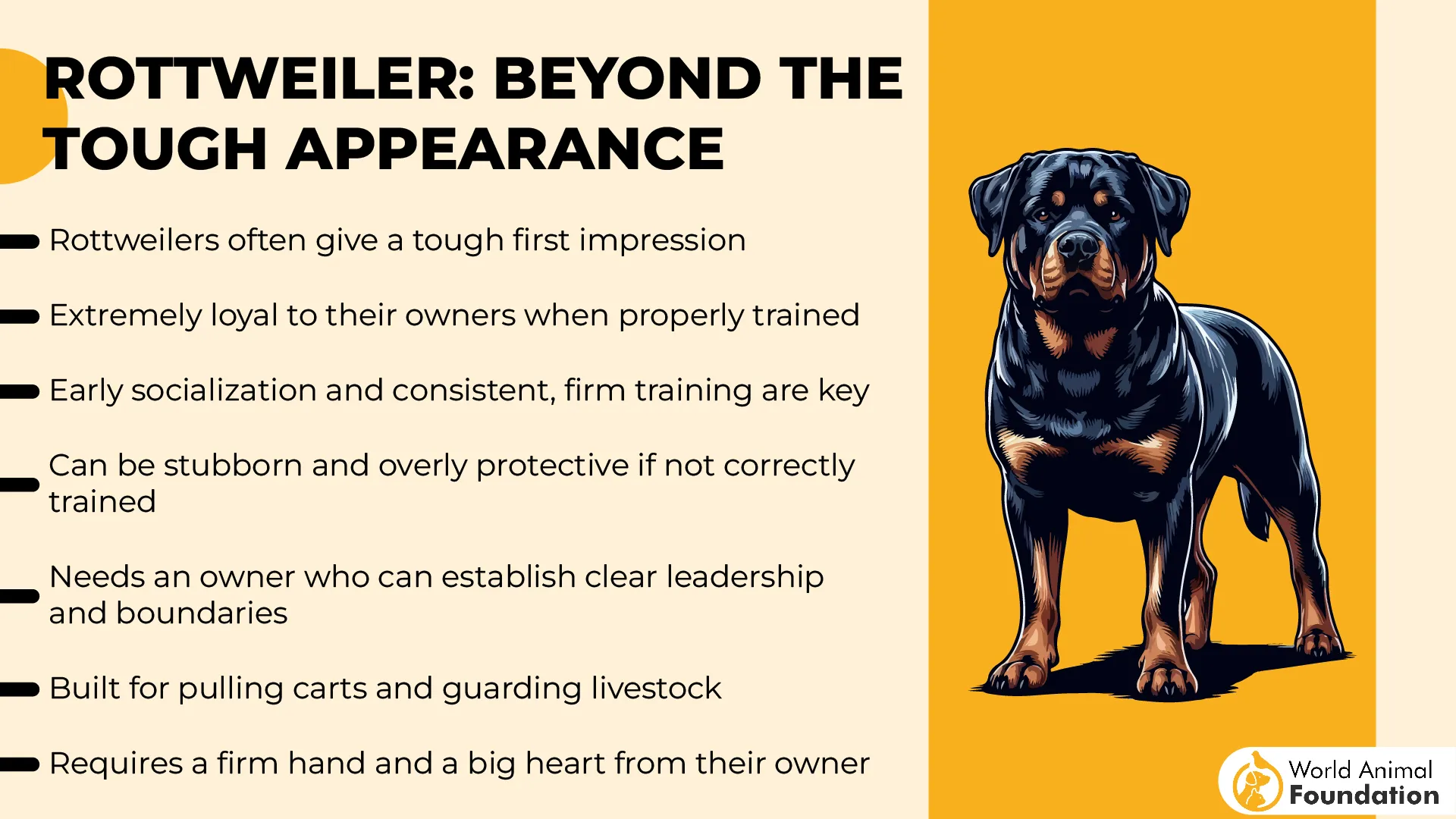
This breed is known for being affectionate with children and loyal to their entire household. They may act reserved in public, but they’re deeply devoted behind closed doors. With a stable environment and confident leadership, Rottweilers offer calm, reliable companionship with a strong protective edge.
Quick Tips
Create structure with firm leadership and early socialization.
Engage in regular, focused training to satisfy their need for purpose.
4. Giant Schnauzer
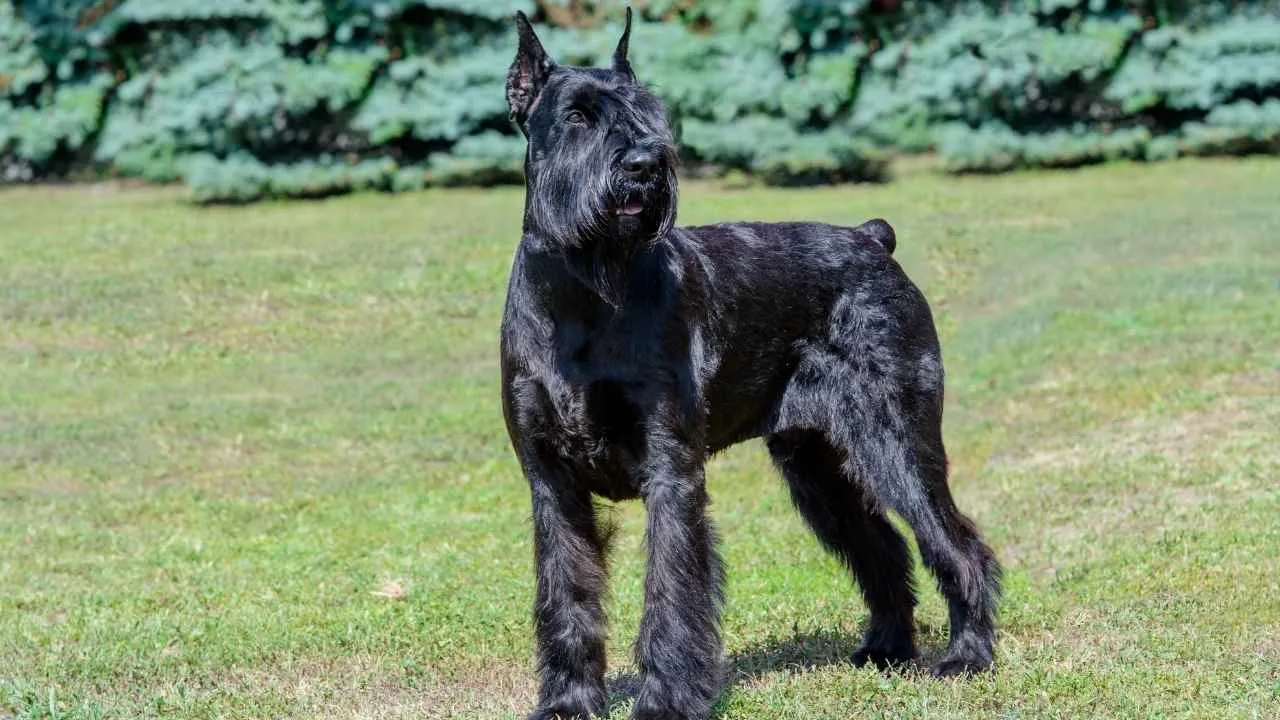
Breed Profile
Size: Large
Weight: 55–85 pounds
Temperament: Loyal, dominant, energetic
Giant Schnauzers are bold and intelligent dogs developed for cattle driving and guarding. Their commanding build, bushy eyebrows, and bearded muzzle give them a distinctive, serious appearance. They’re highly trainable and eager to work, making them ideal for experienced owners who want a vigilant home companion.
They thrive in urban environments when their energy is directed through structured activities. Purina states that these dogs need plenty of physical exertion, such as long walks, jogs, or interactive play. Without stimulation, they can become restless or develop challenging behaviors.
Grooming is more involved than with short-coated breeds, but it’s manageable. Their wiry double coat requires regular brushing and professional trimming to prevent matting. While they don’t shed much, they do need consistent upkeep to maintain their signature look.
Temperament-wise, Giant Schnauzers are naturally protective but not overly aggressive. They’re loyal to their families and often reserved with strangers. Their intelligence means they quickly pick up commands, but their assertiveness calls for confident leadership.
This breed is highly driven and excels in activities like agility, obedience, or scent detection. They’re not content to lie around all day; they prefer having a job or task. For urban dwellers willing to commit to daily structure and engagement, this breed is a powerful, loyal choice.
Quick Tips
Incorporate high-energy tasks and obedience drills to keep their mind sharp.
Maintain a strict grooming routine to prevent coat issues.
5. Belgian Malinois
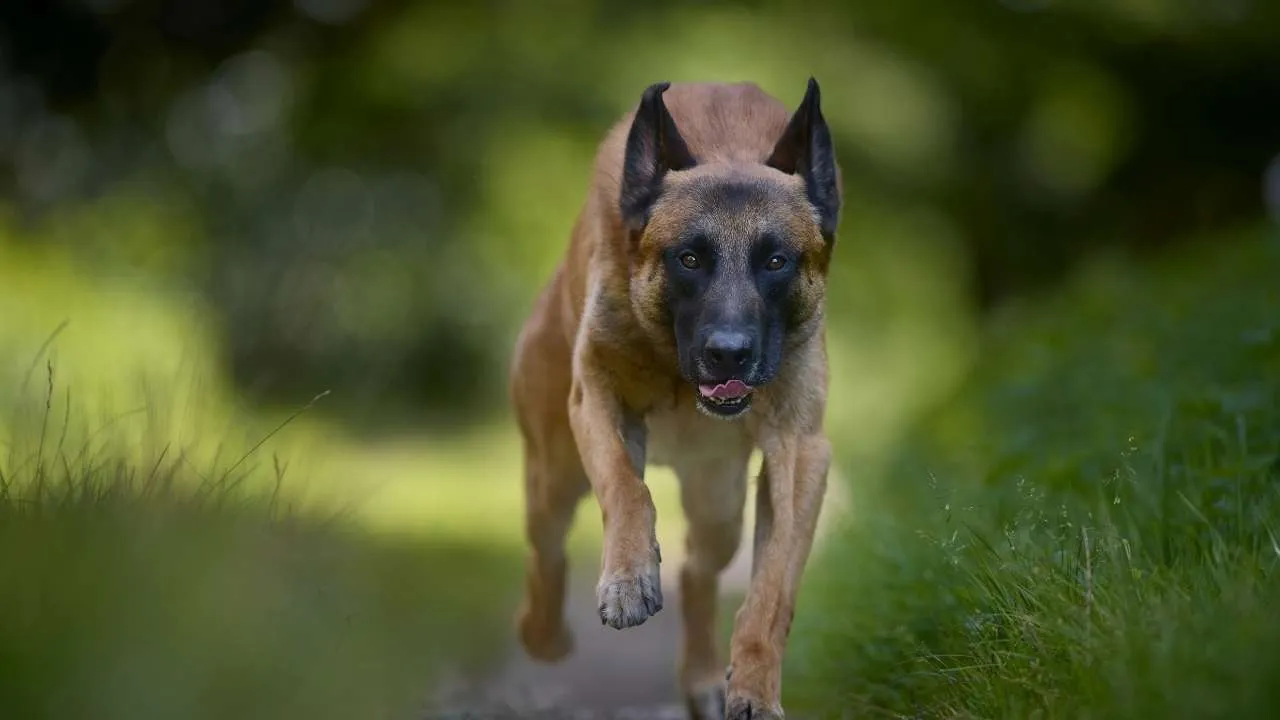
Breed Profile
Size: Medium to large
Weight: 40–80 pounds
Temperament: Intelligent, alert, hardworking
The Belgian Malinois is a focused, agile breed originally developed for herding in Belgium. Known today for excelling in police and military work, this dog’s drive, responsiveness, and confidence set it apart. It’s a breed that thrives on challenge and mental stimulation.
While the Malinois can adapt to urban life, it requires an exceptionally active and structured household. Daily physical workouts, task-based training, and interactive play are non-negotiable. Without an outlet for its intense energy, this breed may become destructive or overly anxious.
With a short, dense coat, the Malinois is relatively low maintenance. Weekly brushing is usually sufficient to manage shedding, and their coat naturally repels dirt. They’re also quick to bounce back after outdoor activity and rarely require frequent bathing.
This breed is highly protective, often forming a deep bond with one person in the household. They’re alert and reserved around strangers, making them natural guardians. Their sensitivity to commands and sharp instincts make them highly responsive once bonded with a handler.
Belgian Malinois are best suited for experienced owners who can provide advanced training and purpose-driven tasks. They’re not ideal for casual pet owners, but they’re incredibly rewarding for those who match their intensity. In capable hands, they become unmatched protectors and companions.
Quick Tips
Only consider this breed if you can offer advanced daily training.
Use obedience games to provide structure and mental stimulation.
6. Cane Corso
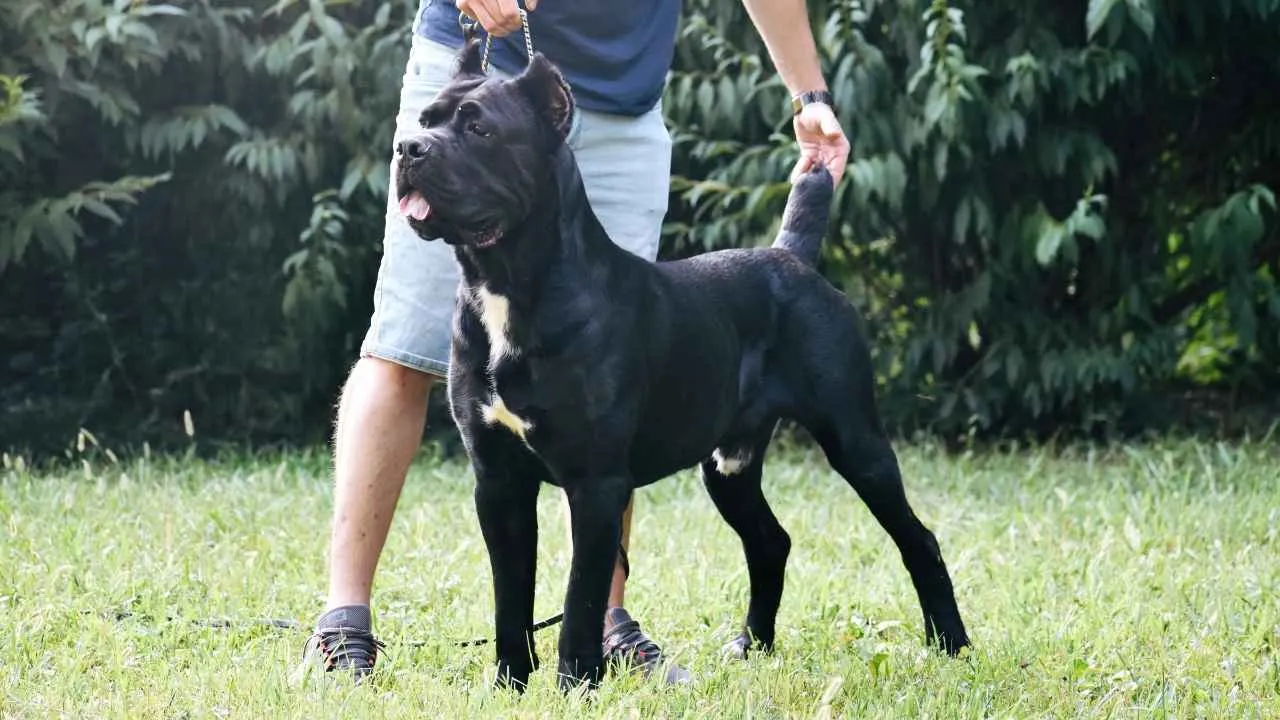
Breed Profile
Size: Large
Weight: 88–110 pounds
Temperament: Confident, quiet, protective
Cane Corsos are muscular, confident dogs with ancient Italian lineage as estate guardians and hunters. Their impressive presence is matched by a calm, watchful temperament, especially when properly socialized. They take their guarding role seriously but are typically reserved rather than reactive.
In urban settings, Cane Corsos can do quite well if provided with clear boundaries and leadership. They are not hyperactive, but they do require purposeful exercise. Regular walks, structured play, and mental engagement help them stay relaxed and focused indoors.
Despite their size, they’re relatively low-shedding with a short coat that needs only weekly brushing. Basic grooming keeps them clean and manageable, and their coats adapt well to different weather conditions. Their cleanliness and quiet nature make them surprisingly suitable for city homes with space-conscious layouts.
They are natural protectors and won’t hesitate to act if they sense a threat, though they’re rarely vocal without cause. Early training and exposure to various environments help refine their judgment. Their intelligence and calm disposition make them strong yet manageable with consistent guidance.
Cane Corsos do best with experienced owners who can maintain calm authority. They respond well to training but won’t tolerate harsh handling. As loyal and steady companions, they bring a grounded, composed energy to any household.
Quick Tips
Set clear rules from day one and reinforce them consistently.
Focus on socialization early to shape confident, even-tempered behavior.
7. Rhodesian Ridgeback
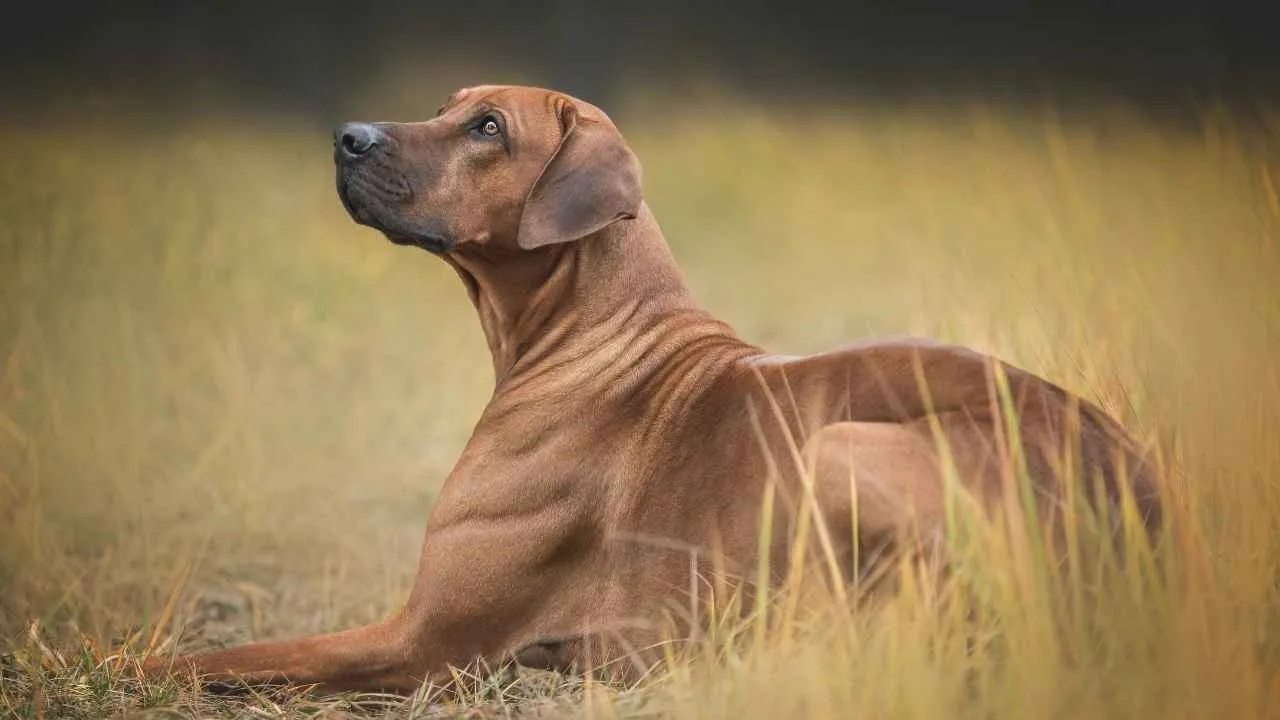
Breed Profile
Size: Large
Weight: 70–85 pounds
Temperament: Independent, dignified, affectionate
Originally bred in Africa to track and corner lions, Rhodesian Ridgebacks are powerful yet graceful dogs. Recognizable by the signature ridge of hair along their back, they combine strength, agility, and a cool-headed temperament. Despite their bold ancestry, they’re often calm and affectionate companions.
For urban life, Ridgebacks offer a surprisingly low-energy indoor presence. They’re clean, quiet, and prefer lounging near their people when not active outdoors. However, they do require vigorous daily exercise and benefit from space to run or structured play to keep their instincts in check.
This breed’s short coat is one of the easiest to maintain. Shedding is minimal, and weekly brushing will keep their coat sleek and healthy. They rarely have a strong odor and are generally low-maintenance from a grooming perspective.
While protective of their family, Ridgebacks are not overly suspicious or quick to bark. Their guard dog tendencies show more through physical presence and intuition than vocal warnings. They can be aloof with strangers but are deeply loyal to those they trust.
Training requires patience, as Ridgebacks are known for their independence. They respond best to calm, confident instruction rather than forceful methods. For owners seeking a poised, low-fuss guard dog, the Rhodesian Ridgeback is a noble and capable choice.
Quick Tips
Prioritize leash training early to handle their strong prey drive.
Balance independence with structured, reward-based training sessions.
Conclusion
Choosing the best guard dog isn’t just about size or toughness—it’s about temperament, intelligence, and how well the breed fits into your home and family dynamics. Whether you’re looking for a fiercely loyal protector or a loving companion with a calm demeanor, the best dog breeds for guarding share one trait: they thrive with proper training, structure, and attention.
From livestock guardian dogs like the Cane Corso to highly energetic working breeds like the Belgian Malinois, each has its unique ability to be both a dependable protector and a loyal companion.
To develop effective guard dogs, consistent training, positive reinforcement, and proper socialization should start at a young age. Activities such as dog sports help provide essential mental and physical stimulation, keeping even the most intelligent breeds focused and well-balanced. While some gentle giants may seem intimidating, many make excellent family pets when well-trained.
Keep in mind that even a small dog with a strong bark and alertness can serve as a good watchdog. Ultimately, the best guard is the one that fits your lifestyle, responds well to structure, and brings out the best in both protector and loving companion.


